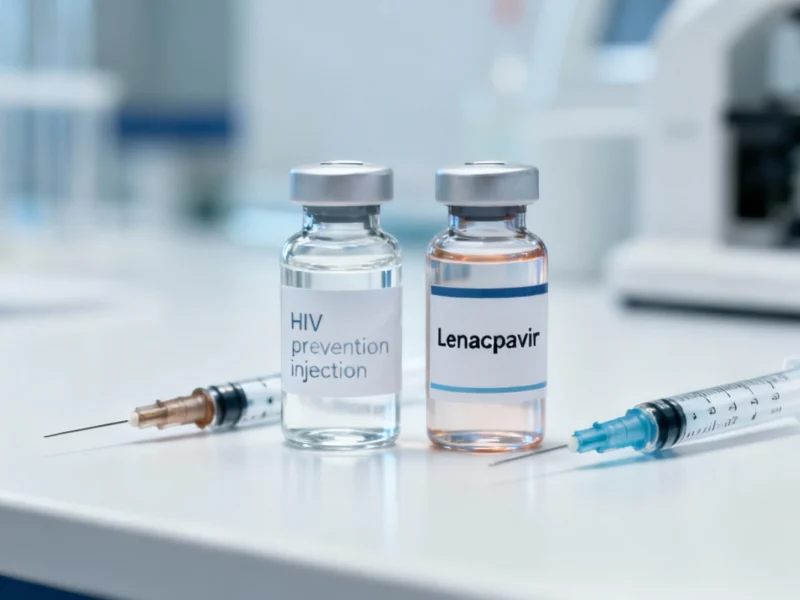Note: Featured image is for illustrative purposes only and does not represent any specific product, service, or entity mentioned in this article.
Breakthrough Detection Method for Harmful Preservatives
Researchers at Brazil’s Federal University of São Carlos have pioneered an innovative sensor technology that transforms ordinary cork into a sophisticated detection system for sodium nitrite in beverages. This groundbreaking approach represents a significant advancement in food safety monitoring, offering a sustainable and accessible solution to a persistent health concern. The development comes at a crucial time when food safety technologies are becoming increasingly important for consumer protection.
The Sodium Nitrite Problem in Modern Food Systems
Sodium nitrite serves as both preservative and color fixative in processed meats, but its presence in beverages poses serious health risks. When consumed in certain quantities, this inorganic salt can lead to the formation of nitrosamines—carcinogenic compounds linked to various cancers. Bruno Campos Janegitz, head of UFSCar’s Laboratory of Sensors, Nanomedicine, and Nanostructured Materials, emphasizes that “this risk motivated us to develop a simple, fast, and accessible way to detect the compound and ensure the quality and safety of liquid consumption.” The research team’s findings highlight how regulatory compliance issues in food safety are driving technological innovation.
Sustainable Material Science Meets Detection Technology
The choice of cork as the foundational material demonstrates the researchers’ commitment to environmental sustainability and cost-effectiveness. “LSNano projects aim to use materials from low-cost platforms that generate added value while respecting the environment,” Janegitz explains. The team’s innovative laser modification process transforms the cork’s surface into conductive graphene pathways without requiring toxic reagents. This sustainable manufacturing approach represents the kind of environmentally conscious innovation that’s becoming increasingly important across scientific disciplines.
Engineering the Perfect Sensor Platform
The development process involved multiple sophisticated steps to optimize the sensor’s performance:
- Laser modification: Concentrated light creates conductive graphene pathways within the cork structure
- Waterproofing: Specialized spray coating prevents liquid absorption that could compromise detection accuracy
- Area delimitation: Nail polish application defines the active sensor region with precision
- Curing process: Controlled oven drying at 40°C for 30 minutes optimizes laser parameters
This meticulous engineering process ensures the sensor maintains high conductivity essential for detecting nitrite’s electrochemical oxidation. The technological sophistication reflects broader scientific advancements occurring across multiple research fields.
Proven Performance Across Multiple Beverage Types
Testing revealed exceptional sensor performance when analyzing water, orange juice, and wine samples diluted in electrolyte solutions. The device demonstrated high sensitivity, excellent stability, and reliable detection at concentrations relevant to food and environmental safety standards. This versatility addresses a critical need, particularly for wine quality control, where sodium nitrite use remains illegal in Brazil and most countries. The successful application across different beverage matrices suggests significant potential for addressing various industry challenges through similar innovative approaches.
Future Applications and Commercial Potential
While currently in laboratory validation phase, the technology shows promise for widespread implementation. The researchers note that design improvements are needed before practical deployment, but the foundation demonstrates remarkable potential. The combination of low-cost materials, sustainable manufacturing, and high-performance detection creates a compelling case for future development. As food safety concerns continue to drive technological innovation, this laser-enhanced cork sensor represents exactly the type of creative solution that could transform quality control processes across the beverage industry.
Broader Implications for Food Safety Monitoring
This development extends beyond simple nitrite detection, potentially paving the way for similar sensors targeting other contaminants. The successful integration of natural materials with advanced laser processing suggests numerous applications in environmental monitoring and food quality assurance. As regulatory standards evolve and consumer awareness grows, accessible detection technologies will play an increasingly vital role in ensuring product safety. The research demonstrates how scientific breakthroughs in one domain can inspire innovative solutions across multiple industries.
The continued refinement of this technology could eventually provide restaurants, manufacturers, and even consumers with affordable, reliable tools for verifying beverage safety—a development that would represent a significant step forward in public health protection and quality assurance practices.
This article aggregates information from publicly available sources. All trademarks and copyrights belong to their respective owners.



